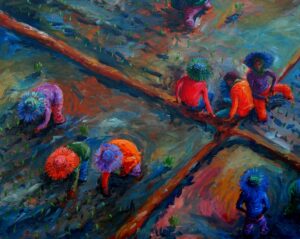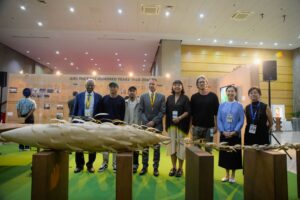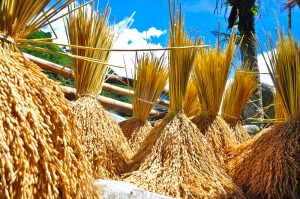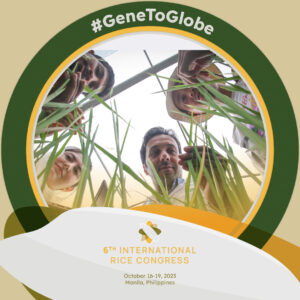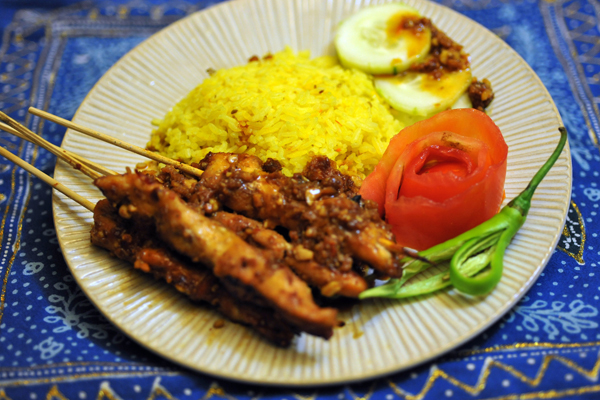
Nasi kuning (yellow rice) is a traditional Indonesian rice dish cooked with coconut milk and turmeric that is usually eaten during special events. The yellow color of the dish is said to resemble gold, so it is often served during special occasions to symbolize good fortune and wealth. It is usually served with a variety of side dishes such as satay. Satay is a dish of chicken, goat, mutton, beef, pork, fish, or other meats, diced or sliced, seasoned, skewered, and grilled, and then served with various spicy seasonings.
Nasi kuning
Ingredients
3 cups rice
1/2 inch fresh turmeric (grated)
1 cup coconut milk
1 teaspoon lemon juice
1 tablespoon ground coriander seeds
Salt
Directions
Wash the rice once. Mix the coconut milk, turmeric, and coriander and then add to the rice.
Put lemon juice in the rice to give it a nice yellow color and add a little salt.
Cook in a rice cooker.
Chicken satay
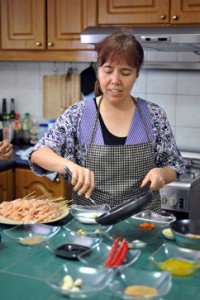
Ingredients
1/2 to 3/4 kilograms chicken thighs (cut into long strips)
½ cup peanuts
5 pieces garlic
5 pieces candlenuts or pili nuts
2 tablespoons margarine (melted)
1 tablespoon coriander
3/4 tablespoon sweet soy sauce
Cooking oil
Salt
Pepper
Chili (optional)
Directions
Marinate the chicken in the sauce for at least 30 minutes.
Grill in the oven or barbeque until well done.
Satay marinade
Directions
Crush the candlenuts or pili nuts and garlic using a crusher or traditional grinder. Crushing the ingredients gives a better aroma. Mix salt, coriander, pepper, and chili (optional) with the crushed nuts and garlic.
Fry the mixture using peanut, olive, or any kind of oil in a pan until the mixture turns light brown.
Add the peanuts, melted margarine, and sweet soy sauce.
Satay sauce
Add water and more sweet soy sauce to the leftover marinade.
Bring to a boil and serve with the chicken.
_________________________________________
Dr. Slamet-Loedin is a molecular biologist and heads the Genetic Transformation Laboratory at the International Rice Research Institute (IRRI). Her work at IRRI aims at helping two billion women and children who are affected by micronutrient deficiency, also known as “hidden hunger.” She leads a team that develops healthier rice, particularly high-iron and zinc-rich rice.
When she is not in the laboratory, she is busy in the kitchen—whipping up some dishes for her family, who now stays with her in the Philippines. Although she enjoys some Filipino dishes, she finds time to cook Indonesian dishes to let her family experience the “taste of their home country.”

